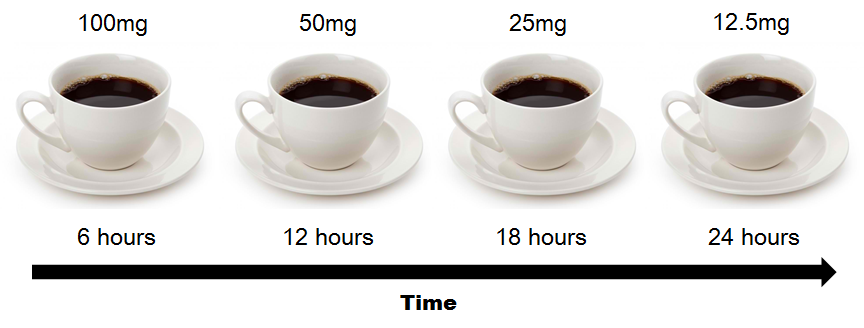I’ve decided to start up a little Question of the Week (QOTW) series that covers some questions that I get asked frequently. Whilst I won’t be answering these on a week-to-week basis due to other things in my life taking up my time, if you happen to have a question, hit me up: submit a question. This week it’s coffee. Let’s get started.
Whether you read (and believe) the story of Kaldi and his goats and how they became energized after eating strange berries, or the story of a Muslim that was banished to the desert and eventually drank some strange dark liquid after not successfully softening the beans, coffee seems to have a pretty extravagant backstory.
The multitude of stories and conflicting information regarding its true origins and inception to society out there, however, is confusing at best. But, there are a few things we can be sure of. Its popularity and deliciousness, for one. We can also be sure that the consumption of it can be tracked as far back as the year 800, with a Yemen or Ethiopian origin, and that the English name for it comes from the Dutch word ‘koffie’.
The Haraz Mountains of Yemen, the home of coffee beans.
But hey, you’re not here for a history lesson. You’re here for some straight-up K bombs regarding the beverage so many of us consume on a(-n almost) daily basis. So let’s hop to it, shall we?
Coffee 101
Coffee is something that has been around for a rather long time. It’s also something that tends to be on most people’s mind when they raise their little head off their pillow each morning, or as they make their way back to the office after a lunch break, dreading that 2:30pm dip in brain functioning.
Whilst it is generally consumed in a wide range styles: the classic cappuccino, latté, long black, and everybody’s favourite paleo, vegan friendly soy, tofu-laced, low fat latte with a caramel drizzle concoction, what is contained inside coffee is generally what one seeks when they sip on it.
Caffeine.
Caffeine 101
We all know that caffeine acts as a stimulant and a mild diuretic, but what you may not have known is that caffeine comes under the category known as nootropics. This is a term that is given to substances that are cognitively enhancing. Or, in laymen’s terms, act as “smart drugs”.
 The classic, overused brain stimulated image to elaborate my point.
The classic, overused brain stimulated image to elaborate my point.
What this means is that caffeine does its thing inside your brain, playing a role in boosting things like learning, memory, reflexes, strength, endurance, creativity, and motivation. All good stuff. And in case you’re interested, other nootropics consist of fish oil, creatine, nicotine (probably not recommended), and everybody’s favourite past time: LSD (also probably not recommended).
Caffeine manages to do all this by acting as an antagonist upon a neurotransmitter called adenosine. And since adenosine loves to sedate and relax us, when we let caffeine work its magic, we attain enhanced alertness and stimulation. Which then leads to our brains embracing the moment, and secreting other chemicals like dopamine (our reward-motivation chemical), serotonin (our feel good chemical), and norepinephrine and epinephrine (our adrenaline hormones).
Typically, and as one would find with most things, caffeine seems to affect different people in different ways. This is mainly due to two things: genetics and the length of time one has been sippin’ the liquid gold.
 Can’t have an article talking about molecules if I don’t include its chemical structure, can I?
Can’t have an article talking about molecules if I don’t include its chemical structure, can I?
Now, before we break down the genetics story, we should probably cover caffeine’s existence in its many different forms.
Caffeine Hit Per Serve
On average, per 100 millilitre (ml) of coffee, you are looking at around a 40 milligram (mg) dose of caffeine. Which means, in a standard cup of coffee (around 250ml), you are looking at an 80-100mg dose of caffeine.
If you opt for the instant version, you are looking at around a 30-90mg hit (depending upon brand and quality). A decaffeinated coffee will give you a low 3mg dose per serve. And if you’re a badass and down espresso’s like they’re going out of fashion, then you’re looking at around a 60mg hit per shot (30-50ml).
What this all means is that the size and type of coffee alters what concentration you will get hit with. But what else is important when it comes to attaining that caffeine dose are things like the type of bean (Arabica variations, Robusta variations, and blended combinations), how that bean is roasted (ranging from slightly dark to charred), and how the entire concoction is prepared (slow drip, cold drip, ristretto, basic).

Back to the genetics story…
Caffeine & Genetics
If we want to briefly talk numbers, caffeine has a (very rough) half-life of 2.7-9+ hours. But to make things easier, let’s say that is has a 6-hour half-life.
What this means is that depending upon the concentration consumed, caffeine breaks down in halves every six hours. So if you hit up a regular coffee and gain a 100mg hit of caffeine, in the space of 6-odd hours following this, the concentration will halve. In the next 6 hours, it will halve again.

This breakdown effect has to do with enzyme availability — including enzymes such as aromatase and xanthine oxidase — and potency, and can also be influenced by the interaction of everything else in your system (like nutrients, hormones, etc.) and supplements.
At the end of the day, however, your genetics will play the biggest role of all in determining how you experience the effects of caffeine. Including the onset and prevalence of tolerance.
Caffeine Tolerance
If you happen to drink caffeine every day, there can come a time when you no longer experience the benefits of it. This is largely due to genetics, but instead of simply boosting intake of this substance to achieve the effect you desire, it is sometimes advised to take a break from consuming it and allow your body to let its adenosine do its rightful job.

Typically, this “break” can range anywhere from 2-30 days, but will vary greatly from individual to individual.
Caffeine Negatives
If you are curious how to know if you have built a tolerance for caffeine, one thing to pay attention to is simply a lack of alertness/awareness enhancement that you would otherwise get. Some other signs to look for if you’re concerned that you are consuming too much caffeine are:
– Boosted levels anxiety
– Dizziness
– Restlessness
– Increased heartrate
– Tremors
– An upset stomach
– Insomnia
– Reliance, alongside withdrawal symptoms such as headaches, tiredness, and decreased brain cognition
– Awkwardness when the barista and shop assistants know your name, where you work, and your order.

Caffeine Positives
To counteract these negatives, however, other than the list of positives detailed at the beginning of this article (click here to re-read them), here are some more positives to pay attention to:
– Increased metabolism and fat oxidation
– Boosted power output ability (for things like running and lifting weights)
– Improved reflexes and reaction time
– Increased testosterone production
– Lowered risk of diseases like Type 2 diabetes, Alzheimer’s, Parkinson’s, and liver cancer
– Decreased rates of depression
– Increased antioxidants intake
– Increased life longevity
To access benefits such as these, the dosage differs as everyone will respond differently to caffeine. Though, in saying that, some of these benefits are achieved anywhere between one to five cups of standard coffee (roughly 100mg).
One way you can increase your chance of destroying any chance of attaining these benefits like this is by messing with what you add to it. Things like sugar, artificial sweeteners, butter, cream, and oil, all can hinder these positive benefits that you may be in pursuit of.
Should You Drink It?
While there is certainly little negative to consuming caffeine in all its various forms, if you don’t already drink it, or you have no desire to, then there isn’t a complete necessity for adding it into your life.
Caffeine and its benefits really do speak for themselves, and the only thing you really need to pay attention to are tolerance levels showing up. That and the money you may hand over the counter each week ($3 per day = $21 per week = $84 per month = $1008 per year. And that’s only in regard to one low-priced, standard coffee).
Which is of course just money, something everyone can do whatever the hell they want with. It still is an interesting thought, however, and if you happen to worry about your budget, maybe it’s something to look at.

But hey, I ain’t no commerce or finance advisor, so I think I’ll leave that up to you to decide.
Happy drinkin’ and thanks for reading.
References: Click here.


